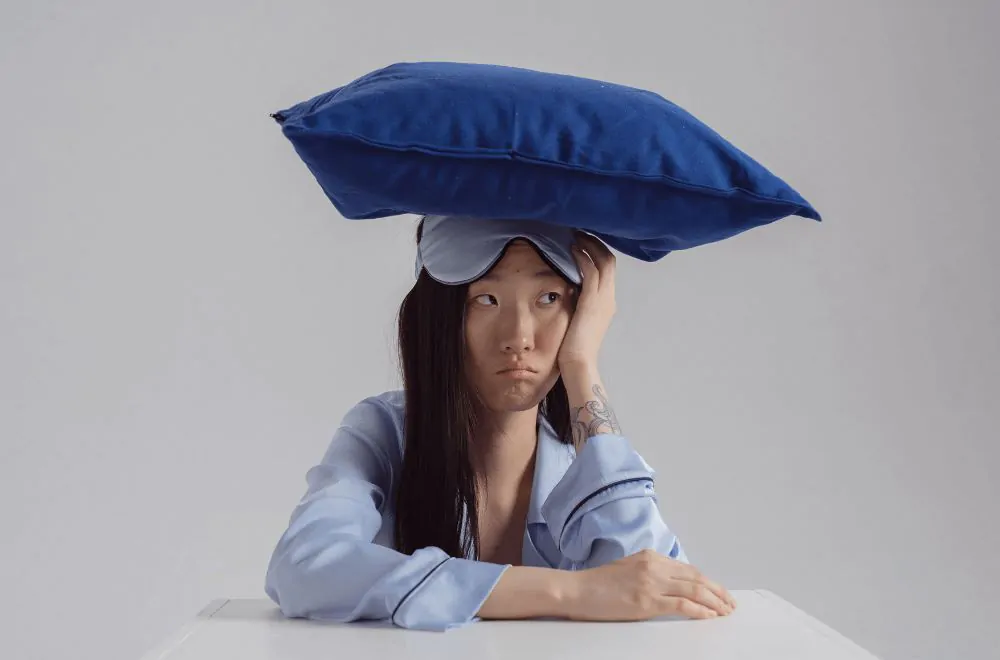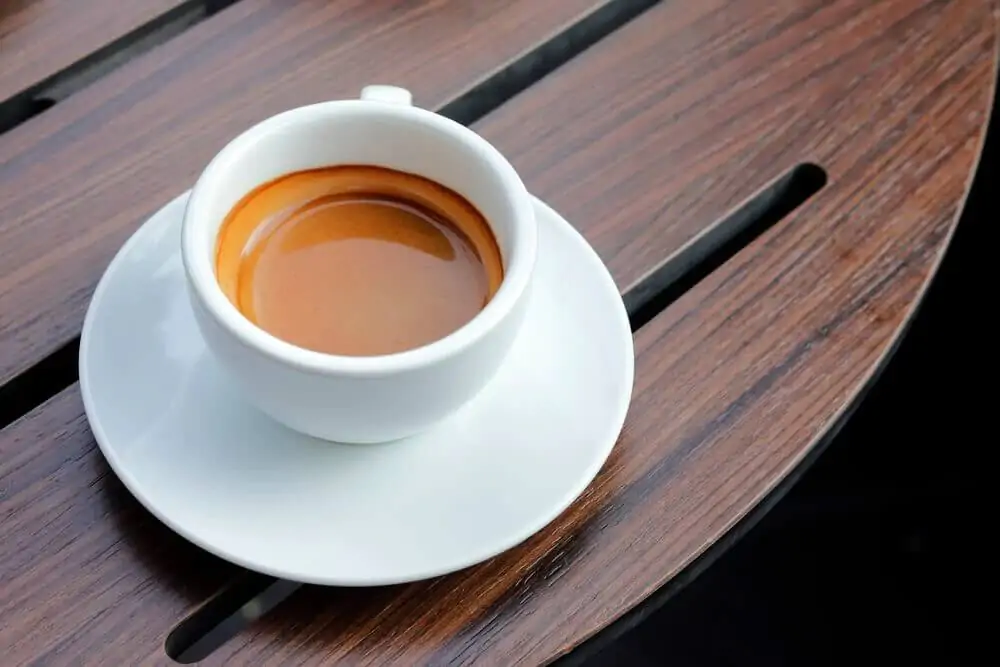This article details how you can quit coffee and minimize those nasty withdrawals that come with cutting coffee out of your life overnight.

It’s easy to get hooked on the effects of caffeine and harder to cut down once you’ve become dependent, but it’s not impossible. You need time, patience, willpower, and maybe some decaf to help ween yourself off.
Quitting Coffee Safely
Sometimes even the most passionate coffee drinker has to take a break. I briefly had to stop drinking coffee several years ago. I developed a secondary allergic reaction to the stuff after years of drinking too much of it, and nearly bathing in it most of the week as a barista.
That experience taught me a few ways around coffee withdrawal headaches, and there is a lot of advice out there from experts as well. So if you need to take a break from coffee, and want to avoid the headaches that come with it, then read on.
Why Do People Quit Coffee
We are obviously massive fans of coffee here, but we also recognize that it’s not for everyone, and sometimes, there are good reasons to cut back or quit coffee altogether. As I pointed out above, I have previously had medical reasons to cut back on the drink.
However, allergies are far from the only reason people leave their morning cup of coffee behind. Here are just a few of the reasons people abandon their cup of joe routine.
Blood Pressure
Caffeine consumption has been directly linked to high blood pressure and hypertension. Thus, if your doctor reckons your numbers are a little high and you have a caffeine addiction, then it might be a good idea to quit the caffeinated version of the drink gradually.
Pregnancy
If you are expecting or breastfeeding, then you will have to limit your caffeine intake. For many of us, it’s easier to quit than it is to cut back. If you fall into this category, you may be considering cutting out your regular trip to Starbucks (or at least changing your order!).
Sleep Issues

It goes without saying, but caffeine can send your nervous system into overdrive, and this can affect your sleep in a big way. It is a side effect that most of us coffee drinkers would rather didn’t exist, but if you suffer from insomnia, it’s one you can’t ignore. To get better sleep, look at reducing your intake or quitting entirely.
Mental Health Issues
Coffee and anxiety don’t mix. In fact, that feeling of nervousness that you get when anxious is only multiplied if you are hyped up on caffeine. A caffeine habit can also worsen brain fog, cause difficulty concentrating, and lower dopamine levels.
Thus, if you are prone to this, then leaving the espresso machine unplugged might be your best bet for improved mental wellness.
Other Reasons
Of course, you might just want to cut back because you are spending too much cash in your local coffee shop. Or you feel that you have become over-reliant on that pick-me-up that caffeinated beverages give you.
The reasons to quit coffee are plentiful, and they may be personal. No matter your reason for seeking out this article, there are ways to quit coffee without headaches and your energy levels hitting the floor.
However, before we share them with you, you should consider whether you need to quit coffee altogether or simply switch to a decaf version.
Quit Coffee Or Quit Caffeine
The reason for the headaches you get when you quit drinking coffee is caffeine withdrawal. In my case, before I quit coffee altogether for about a year, I did a test: I drank decaf coffee to see if the symptoms I was having were due to the caffeine I was taking in or the coffee itself. Decaf coffee still triggered a reaction – but drinks that I knew had the same amount of caffeine didn’t cause me any problems.
So the first step is to understand and decide whether it’s coffee itself you want to quit drinking or if you need to back off on your caffeine intake. The methods you use to quit will be slightly different for each scenario. Take time to find out whether the coffee itself or the caffeine within it, is the culprit is your first task.
Quit Coffee But Keep The Caffeine
Once you know whether you need to quit coffee entirely or whether you cat tone down the caffeine, there are a few strategies that doctors and other experts recommend. If you’re cutting out coffee but can still have the same amount of caffeine, the easiest way to avoid caffeine withdrawal is to switch coffee with other drinks with the same caffeine content.
The easiest method to do this is with tea, which naturally has relatively high caffeine content, although not as high as coffee in most forms. The type of tea does play a role: black tea has about half as much caffeine as coffee, and green tea tends to have half of the caffeine in black tea.
Matcha, a type of green tea powder popular in Japan, tends to have the highest caffeine content of all: nearly as much as a cup of coffee. The brewing method matters too: you can get much more caffeine if you brew your tea double or even triple-strength.
Energy drinks are another option, but before you choose them, you should consider the effect they will have. It might be a case of quitting one drink because of the health benefits only to replace it with one that you will also need to detox from soon after.
While I was taking a break from coffee but still wanted the same caffeine level, I mixed double-brewed green tea with matcha to get a drink that looked a little odd–but which had enough caffeine to prevent any headaches and keep me going the way coffee used to. It also helped with any cravings I had.
Lower Caffeine Consumption
If your problem is less about the coffee itself and more about the caffeine content, there are many options at your disposal to make things better. Many doctors don’t recommend quitting coffee cold turkey because of the caffeine withdrawal symptoms.
Instead, they recommend that you try to reduce your caffeine content gradually. Start with one fewer coffee drink or cup of brewed coffee per day, or switch to decaf for at least part of the day.
Switching to black tea can also help stave off headaches. While black still has caffeine, it has about half of the amount present in coffee, and due to the other chemical components in tea, it tends to enter your system more gradually. So you don’t get jitters, and you also don’t get withdrawals.
Another piece of advice is to up your water consumption. Coffee is made up predominantly of water. While caffeine does have a slight diuretic effect if you drink it regularly, that effect tends to wear off over time, so some of the headaches that come from quitting coffee may stem from drinking less.
Drinking more water can help to stave off at least those headaches.
How To Quit Coffee: Switch, Reduce, Or Stop
If you are a regular coffee drinker, you will need some sort of a substitute. That’s why we have put together a few options that might help with the withdrawals.
Option 1: Switch A Cup For Decaf
Lots of people cry “death before decaf,” but if you’re trying to quit coffee or caffeine just makes you jittery, then decaf is one solution to your problem. At the very least, decaf is a band-aid solution until you can drop coffee for good.
Fortunately, most decaf coffee brands taste identical to regular coffee, so if you love coffee for its taste, you should still be satisfied. Decaf is not entirely caffeine-free. The decaffeination process removes around 97% or more of the caffeine.
There is only around 2 mg of caffeine in a cup of decaf, compared to an average of 95 mg of regular coffee. Decaffeinated dark roasts tend to have even less caffeine than decaf, which is a medium or light roast.

Assuming you drink three cups of coffee a day. Start off by switching one of those cups out for decaf. For three weeks (or whatever amount of time you feel comfortable with), drink your two cups of regular coffee and one cup of decaf.
It’s best to work backward when cutting out coffee. This means cutting out the last cup of coffee you would normally drink in favor of decaf. Cutting out the first might leave you feeling groggy for the day, so at least with an evening cup, you should be closer to bedtime or nearing the end of a workday.
Option 2: Cut Back On Cup At A Time
Rather than drinking decaf, you can also just slowly ween yourself off of regular coffee one cup at a time. If you drink three cups of coffee a day, remove one cup. Limit yourself to two cups of coffee for around one month.
I suggest starting this on a weekend, so you have time to adjust before work on a Monday morning. Once you’re used to running on a reduced amount of coffee, cut out another cup. If you’re down to one cup of coffee by this step, maintain that for a few weeks until you’re ready to quit entirely.
Option 3: Go Cold Turkey With Black Tea (Or Alternative)
Some of you will be more comfortable just quitting entirely and trying one of the alternative options listed above. However, this option isn’t for everyone, and if you do choose it, you should keep close attention to your heart rate to ensure that withdrawals aren’t getting the better of you. You should also slowly substitute some of your caffeine consumption with other drinks, to ensure that headaches are minimized.
